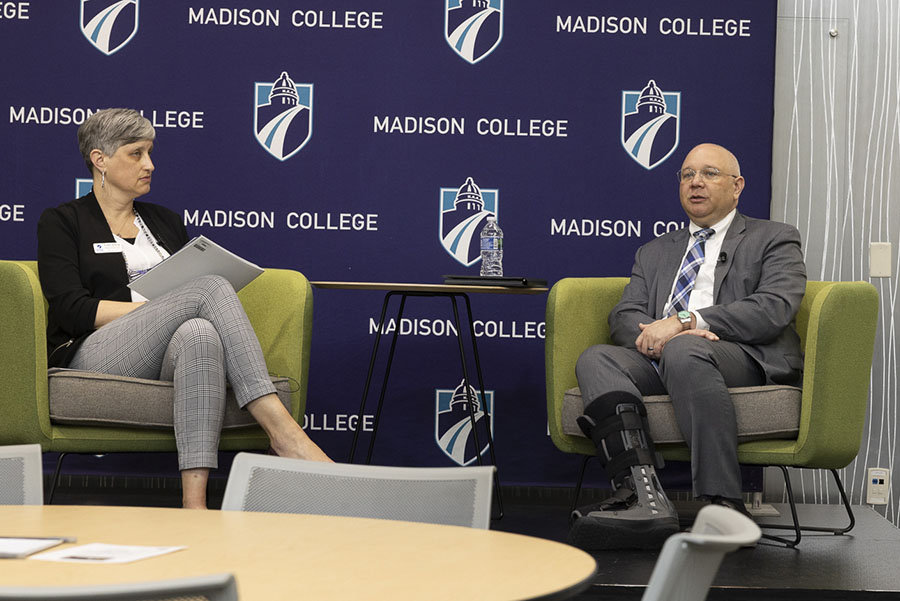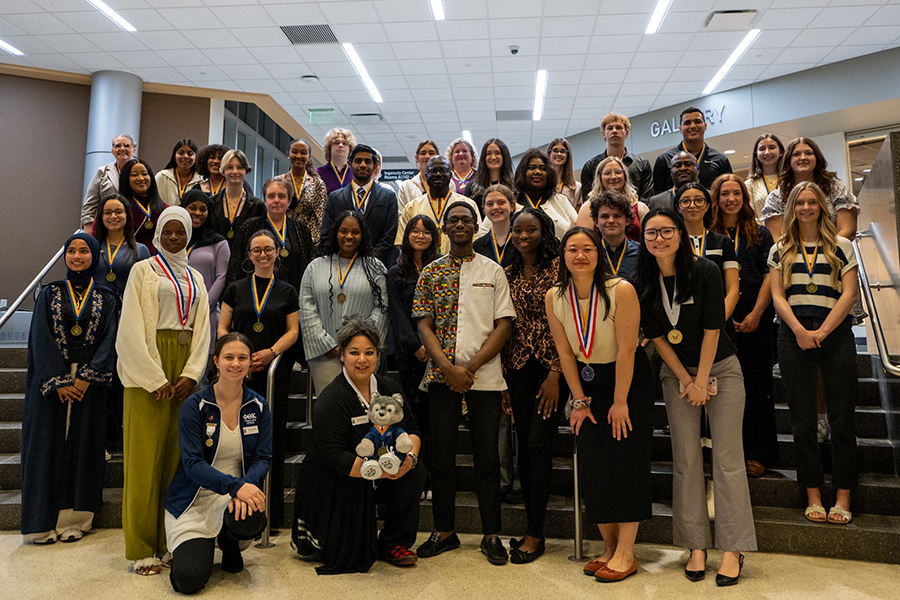Both the Watertown and Fort Atkinson campus now have a class devoted to renewable energy. In November 2009, construction was finished on the wind turbine at the Fort Atkinson campus. Since then, there has been an Introduction to Wind Energy Class instituted at Watertown and Fort Atkinson.
The Intro to Wind Energy class is taught via telepresence by Christopher Folk, an industrial maintenance instructor. Folk interchanges between campuses. The course has a roster of 15 students.
“We looked at this as an opportunity to offer some renewable energy courses,” Folk said.
The class is a part of the Introduction to Wind Energy Certificate. It is a 10-credit certificate. The certificate also includes Wind Systems Technician 1, DC/AC Circuits for Maintenance, and Safety Compliance.
Since its inception, it has attracted students from such areas as Madison, Delavan, and Whitewater. Even though there is limited interaction between students and Folk, the telepresence technology appears to be working.
“Everyone doesn’t have to come to the same classroom,” Folk said. “(People from) larger distances come to attend the class.”
The certificate can be earned in one year. The program is based off of the curriculum developed by Lakeshore Technical College in Cleveland, Wis. At Lakeshore, a two-year degree is offered.
The certificate includes training in industrial maintenance. There is an overlap in industrial maintenance and a wind energy technician, according to Folk.
“The first thing is to make students understand how energy is used and what the demand is in the United States locally and worldwide,” Folk said. “We want to be able to show the importance of coming up with more of a more sustainable energy generation process more than just burning fossil fuels.”
In the class, lectures explore several different topics in wind energy. First, the actual turbine itself is discussed. Current technological advances and how turbines function is emphasized. This leads to how to install turbines and specifics on what types of towers the turbines can be installed on. Intro to Wind students do not actually perform maintenance on the turbine, but class discussions often revolve around the subject.
There is also discussion about locations for possible turbines. Lectures in the class focus on why certain locations don’t work, such as heavily populated or wooded areas.
With any Madison College program, the number one goal is for students to enter the workforce. With this up and coming field in sustainability, finding jobs is not an issue.
“Lakeshore has had very few students actually complete the program,” Folk said. “They’re getting hired by companies before they are even complete.”
In 2008, the wind energy field helped create 35,000 jobs in the United States As of 2006, the European work force could attribute 150,000 jobs to wind energy, according to the European Wind Energy Association.
As of 2009, there were six states that were receiving five percent of their energy from wind, according to the American Wind Energy Association. Iowa was the first state to go above 10 percent at 14.2 percent in 2009.
That number is only expected to increase because “green collar” jobs are one of the fasted growing fields. The country is projected to be at 20 percent wind energy by 2030, according to the U.S. Department of Energy. It is projected that the wind energy field will support 500,000 jobs by 2030.
Starting salaries in this field usually range from $55,000 to $65,000. After the entry pay, wind energy salaries range from $65,000 to $78,000 per year.
As the instructor of the wind energy class, Folk does suggest transferring to Lakeshore in order to advance in the field. However the Intro to Wind Energy Certificate a “definite starting point,” according to Folk.


























